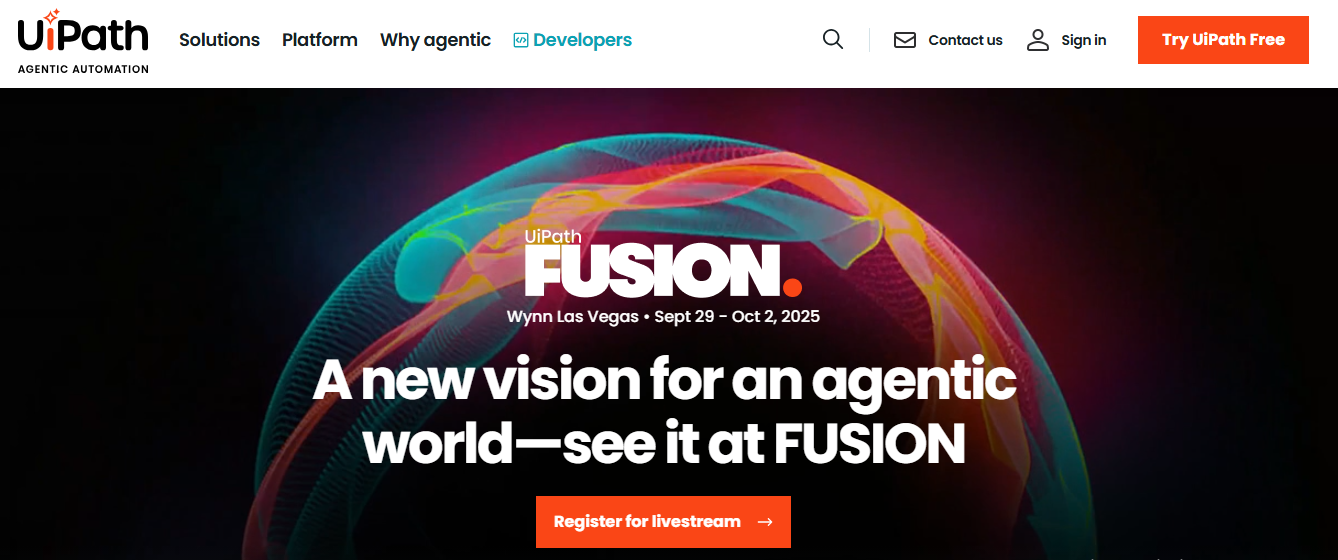Picture this: You set up an Artificial Intelligence (AI) chatbot to handle customer questions, feeling proud of your smart automation. But then you check the chat logs and see the AI told an angry customer to "try turning it off and on again" when they were asking for a refund. Now you have an even angrier customer and a potential lawsuit on your hands.
This is exactly why human in the loop systems matter. They let AI do the heavy work while keeping humans ready to step in when things get tricky or sensitive.
In this article, we will cover:
- What 'human in the loop' really means and how it works.
- Why businesses need the human touch even with smart AI.
- Real examples of Human in the Loop.
- Top tools that make human oversight easy to set up.
Human in the loop (HITL) is a way of running automated systems where people can jump in and take control when needed. Think of it as having a safety net for your automation.
Instead of letting AI make all decisions by itself, systems are designed to ask for help when they're not sure what to do. It's like having an AI assistant or AI agent that's smart enough to know when it needs a human to make the final call.
Here's how it works in simple terms:
1. AI handles routine tasks - The system takes care of normal, everyday work
2. AI spots tricky situations - When something unusual happens, the AI knows it needs help
3. Human takes over - A real person steps in to handle the complex situation
4. AI learns - The AI remembers what the human did for next time
Imagine you're using an AI agent to process job applications. The AI or agent can easily sort applications based on education and experience. But what if someone has a unique background that doesn't fit the normal pattern? That's when a human recruiter needs to take a look and decide if this person might actually be perfect for the job.
This approach gives you the speed of automation with the wisdom of human oversight.
AI is smart, but it's not perfect. Even the best AI systems make mistakes, and some of these mistakes can be very expensive.
Let's say you're using AI for customer onboarding. The AI might automatically reject a new customer because their address looks suspicious. But what if that customer is actually legitimate and would become your biggest client? Without human oversight, you just lost a major opportunity.
High degree of accuracy matters most when:
- Money is involved (like loan approvals or fraud detection)
- Customer relationships are at stake
- Legal compliance is required
- Safety is a concern
I've seen companies lose thousands of dollars because their AI made wrong decisions without any human in the loop safeguards.
Customers still want to talk to real people, especially when something goes wrong. While an AI assistant can answer basic questions quickly, there are times when customers need the human touch.
Think about it - when you're frustrated with a product and need help, do you want to argue with a chatbot or talk to a real customer service representative who can understand your situation and actually help solve your problem?
Human customer service agents can:
- Show real empathy and understanding
- Think creatively to solve unique problems
- Build relationships and trust with customers
- Handle emotional or sensitive situations properly
Companies that try to automate everything without keeping the human touch are bound to end up with mediocre reviews.
Many industries legally require human oversight for important decisions. You can't just let AI decide everything, especially in:
- Healthcare (doctors must approve AI recommendations)
- Finance (humans must review suspicious transactions)
- Legal (lawyers must check AI-written documents)
- Insurance (claims adjusters must verify AI assessments)
Human in the loop systems help you stay compliant while still getting the benefits of automation.
Smart companies use human customer service agents and AI agents as a team rather than replacing one with the other.
Here's how it typically works:
Step 1: AI handles the basics
The AI assistant or agent answers common questions like "What are your hours?" or "How do I reset my password?" This frees up human agents for more important work.
Step 2: AI knows when to get help
When a customer asks something complex or seems frustrated, the AI automatically transfers them to a human customer service representative.
Step 3: Human provides the solution
The human agent can access the AI's conversation history and solve the problem with full context.
For customer onboarding, this might look like:
- AI collects basic information and documents
- AI runs initial verification checks
- Human agent reviews anything that looks unusual
- Human agent calls new customers to welcome them personally
This approach is much better than total automation or human service alone.
Automation works great for repetitive tasks, but smart companies build in human oversight checkpoints.
Take invoice processing as an example:
- AI reads invoices and extracts key information
- AI matches invoices to purchase orders automatically
- When amounts don't match or vendors are new, AI flags for human review
- Human accountant reviews flagged items and makes decisions
- AI learns from human decisions to get better over time
This saves hours of manual work while ensuring accuracy and catching potential fraud.
Good AI needs good data, and keeping data clean requires human in the loop processes.
Most data platforms now include tools for human validation:
Initial data collection:
- AI systems gather data from various sources
- Data validation tools check for obvious errors or inconsistencies
- Human experts review flagged data points
- Clean data gets approved for use in AI models
Ongoing data quality:
- AI monitors data quality continuously
- When quality drops, humans investigate the root cause
- Quality training data gets updated based on human feedback
- AI models get retrained with better data
This ensures your AI keeps getting more accurate over time instead of learning from bad data.
Healthcare shows why human oversight is crucial for life-and-death decisions.
Modern hospitals can use AI to:
- Analyze X-rays and MRIs for potential problems
- Suggest treatment options based on patient data
- Monitor patient vital signs for warning signs
- Schedule surgeries and manage resources
But doctors always make the final call. The AI provides information and recommendations, but trained medical professionals use their experience and judgment to decide what's best for each patient.
This human in the loop approach helps doctors work faster and catch things they might miss, while ensuring patient safety and maintaining the human touch that patients need.
Human oversight dramatically reduces costly mistakes. When AI handles routine work and humans handle exceptions, you get the best of both worlds.
For processes requiring high degree of accuracy like financial transactions or medical diagnoses, this combination is essential.
Customers get fast service for simple requests and thoughtful help for complex problems.
Customer service agents working with AI assistants or agents can:
- Handle more customers per day
- Spend more time on customers who really need help
- Access complete conversation history instantly
- Provide consistent information across all channels
The result? Faster resolution times and happier customers who feel heard and valued.
Human in the loop systems are often more efficient than full automation or manual processes.
Here's why:
- AI handles 80-90% of routine work automatically
- Humans focus on high-value tasks that require judgment
- Less time wasted on false alarms or incorrectly processed items
- Faster training for new employees (AI handles basics while they learn)
Smart automation with human checkpoints prevents expensive mistakes while maintaining speed.
The key to successful HITL systems is knowing when to trigger human oversight.
Good triggers include:
- Confidence scores below a certain threshold
- Unusual patterns or data that doesn't fit normal rules
- Customer requests that seem urgent or emotional
- High-value transactions or decisions
- Legal or compliance requirements
Also train your team:
- Human customer service agents need to understand how AI assistants and AI agents work
- Humans should know what the AI has already tried
- Clear escalation procedures prevent confusion
- Regular training keeps everyone updated on system improvements
Track these key metrics for your human in the loop systems:
Efficiency metrics:
- Percentage of tasks handled automatically vs. requiring human intervention
- Average time to resolve customer issues
- Cost per transaction or interaction
Quality metrics:
- Accuracy rates for AI vs. human decisions
- Customer satisfaction scores
- Number of errors caught by human review
- Compliance audit results
The goal is finding the right balance between automation speed and human touch quality.
Getting your team comfortable working with AI agents takes time and planning
Common challenges:
- Customer service representatives worried about being replaced
- Resistance to new technology and workflows
- Confusion about when to override AI decisions
Solutions:
- Clearly communicate that AI is there to help, not replace humans
- Provide hands-on training with real scenarios
- Show how human-in-the-loop systems make their jobs easier and more interesting
- Celebrate successes when human-AI collaboration solves complex problems
HITL systems need upfront investment for platforms, training workers , and ongoing human oversight, but they typically pay for themselves through time savings, fewer mistakes, and better work result and satisfaction. Most businesses see positive returns within 6-12 months of implementing automation with human oversight.
Skynet Agent Studio
Skynet makes it easy to build AI agents that know when to ask for help.
Key features:
- No-code setup that anyone can use
- Built-in approval workflows for important decisions
- Real-time notifications when human input is needed
- Integrations with important business tools
Perfect for: Enterprise and Small to medium businesses wanting to automate customer onboarding, email management, and basic or complex tasks while maintaining human oversight.
UiPath

UiPath is a powerful agentic automation and robotic process automation platform with sophisticated HITL capabilities.
Key features:
- Enterprise-grade data platform for complex workflows
- Action Center creates tasks for human review when needed
- Advanced analytics and reporting
- Integration with existing business systems
Perfect for: Large companies with complex processes requiring high degree of accuracy and compliance tracking.
Amazon SageMaker Ground Truth

SageMaker Ground Truth specializes in creating quality training data for AI systems.
Key features:
- Data validation tools for labeling images, text, and video
- Human expert review of AI labeling suggestions
- Active learning that focuses human effort on the most valuable data
- Integration with AWS machine learning services
Perfect for: Companies building custom AI systems that need high-quality labeled data.
Human in the loop isn't just a fancy tech term - it's a practical approach that helps businesses get the benefits of AI while avoiding its pitfalls.
Remember, human in the loop systems work best when humans and AI each do what they're good at. AI excels at speed, consistency, and handling large volumes. Humans excel at judgment, creativity, and understanding context.
The future of work isn't about replacing humans with machines - it's about humans and machines working together to achieve better results than either could alone.
Ready to add human oversight to your automation? Start with simple workflows using Skynet Agent Studio and build from there.
